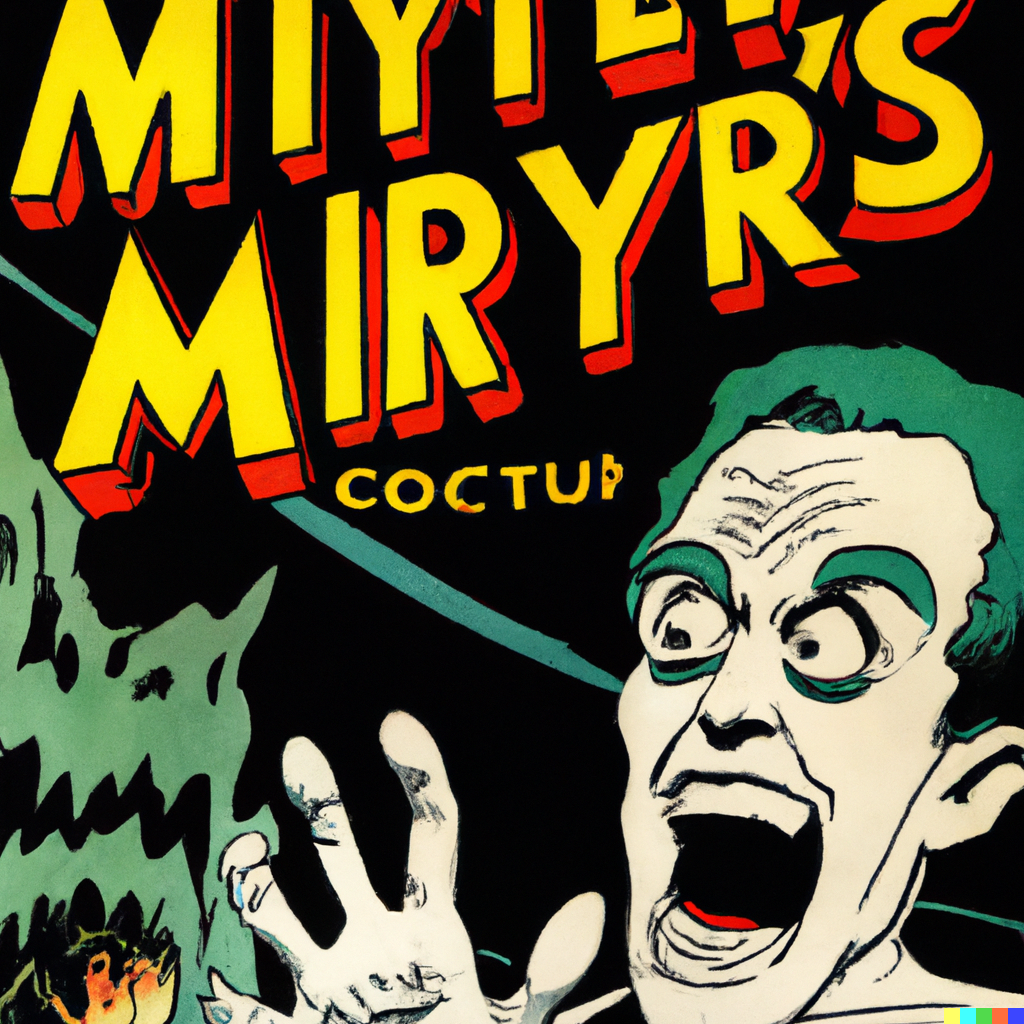To be clear, this question is for general PC use, and not only gaming.
Desktop mode on my Deck has easily become my favorite PC experience in a very long long time, and I use it more docked as a PC than for gaming. I’ve used Windows and Apple my entire life before now, so I have zero experience with Linux, other than the Steam Deck, but the OS is incrediby friendly to newcomers, and I’d say it’s essentially a modern and polished version of Windows 95.
So what would you recommend as a similar experience for desktop?
Edit: I should probably add that I’m an artist and designer, and play around with Blender and 3D modeling stuff, and maybe even some game dev at some point. So Adobe support, and GPU Blender support would be superfantastic.
Desktop mode on the Steam Deck is using KDE Plasma. You can use that on the vast majority of Linux distros.
Here is a few the spring to mind:
- Bazzite - A good place to start, their project goal is to basically be SteamOS like experience you can put on any machine.
- Fedora Workstation with KDE - Bazzite is based off of this project, it’s a more general experiance, lots of people enjoy it.
- Kubuntu - Ubuntu is very popular distro, this is their KDE version.
- OpenSuse Tumbleweed - For folks who want the most up to date software possible.
I had seen Bazzite, and yes it does sound exactly like what I asked, but then on their website, every single feature/selling point is about games or performance. I don’t see one word about general usability, or applications, support, or anything, and I’m not sure who builds a PC used solely for gaming.
I’m an artist and designer, and play around with Blender and 3D modeling stuff. Adobe support, and GPU Blender support would be fantastic.
The same folks who made Bazzite also have Aurora and Bluefin. Those are general purpose distros with the same ideas as Bazzite, just less gaming stuff bundled in. The difference between the two is just the desktop environment (gnome for bluefin, kde for aurora).
But even though Bazzite is focused on gaming, it is still a pretty good distro for general use too. The same stuff that enables windows games to run on it also help run any windows program just as well, so it might be a good pick if you use any software that only runs on windows.
Ah, so Adobe?? Say Adobe and I’m there.
Not Adobe. Only extremely old, no longer for sale versions of Adobe products can run on Linux.
There are better— by which I mean worse but free— alternatives that you should replace them with if you want to abandon Windows.
While Bazzite is gaming focused, it will still be a great non-gaming distro. The main things gaming distros do is include some optimizations, prioritize faster software updates, bundle in some programs like Steam, and usually try to be more new user friendly. There’s also Fedora Silverblue, which is like the parent of Bazzite. It’s more developer focused though, and may not be as new user friendly as Bazzite.
But as others have said, your biggest request is having the same desktop environment as SteamOS, which is the KDE desktop. This is available on nearly every Linux distro, so you can get that experience with any of them. KDE even has it’s own official distro in the form of KDE Neon, which could honestly be a good choice for you if that’s your main requirement. It’s based on Ubuntu, which makes it easy to find help if you have an issue.
The biggest thing left to understand is that SteamOS and Bazzite are immutable distros, which means the system files are locked down. This makes those systems hard to break, and very reliable. However it can make installing some kinds of software harder. More tradition desktops like KDE Neon/Ubuntu/Debian/Fedora(non-silverblue) are not immutable. They will give your more options for installing software/etc, but there’s a higher chance of breaking something if you start messing with system files.
If immutable sounds good, I’d recommend going with Bazzite still. If you want more freedom to customize your system and install software from outside of the discover store, I’d recommend KDE Neon.
The distro’s marketing is gaming focused but the truth is there is not anything bad about their overall desktop experience. There is no difference between distros for blender and adobe support.
Apologies, I don’t understand. Is any modern Linux distro lacking “general usability” or applications? Anyway, for Bazzite, there’s a bunch of ways to install software. (Though I haven’t used it myself.) I’m also not sure what you’re looking for when you’re saying “support”. Good documentation? A helpful community? Continued active development?
Just because there’s a strong focus on gaming doesn’t mean the distro would suddenly do bad at everything else, especially… general home/office use. Linux is good with that across the board. I hope I didn’t misunderstand. Please explain.
By support, I meant software installability.
Then get Kinoite, it’s like Bazzite minus the gaming presets.
Adobe support

Jokes aside, Adobe refuses to play nice with Linux. It likely won’t matter which distro you choose, because Adobe refuses to release a native Linux version. You can use Wine as a workaround, at least.Software support is basically identical across any Linux distro. It’s not really a concern when choosing a distro to use. Of course some are easier to install stuff on than others.
I am trying to dance around Linux distro concepts that are probably not super beginner friendly, so my descriptions might have been obtuse, but yes you can generally do anything on any distro.
Bazzite is a immutable distro, which gives you certian advantages, but makes it harder to accommodate some use cases. In general, if the software you want is on https://flathub.org/ you are golden.
By Adobe, I mean Photoshop, Illustrator, Substance, etc, which on Windows need to be installed with the Adobe Cloud app. Flathub only seems to have Acrobat.
I don’t believe those products have native Linux versions. You would need to run them from a compatibility layer. To be honest nothing on my desktop has needed that so not too familiar with the best way to do that.
Unless your boss tells you that you NEED to use Adobe, get rid of them and use open source software.
A lot of people are going to recommend you mint, I honestly think mint is an outdated suggestion for beginners, I think immutability is extremely important for someone who is just starting out, as well as starting on KDE since it’s by far the most developed DE that isn’t gnome and their… design decisions are unfortunate for people coming from windows.
I don’t think we should be recommending mint to beginners anymore, if mint makes an immutable, up to date KDE distro, that’ll change, but until then, I think bazzite is objectively a better starting place for beginners.
The mere fact that bazzite and other immutables generate a new system for you on update and let you switch between and rollback automatically is enough for me to say it’s better, but it also has more up to date software, and tons of guides (fedora is one of the most popular distros, and bazzite is essentially identical except with some QoL upgrades).
How common is the story of “I was new to linux and completely broke it”? that’s not a good user experience for someone who’s just starting, it’s intimidating, scary, and I just don’t think it’s the best in the modern era. There’s something to be said about learning from these mistakes, but bazzite essentially makes these mistakes impossible.
Furthermore because of the way bazzite works, package management is completely graphical and requires essentially no intervention on the users part, flathub and immutability pair excellently for this reason.
Cinnamon (the default mint environment) doesn’t and won’t support HDR, the security/performance improvements from wayland, mixed refresh rate displays, mixed DPI displays, fractional scaling, and many other things for a very very long time if at all. I don’t understand the usecase for cinnamon tbh, xfce is great if you need performance but don’t want to make major sacrifices, lxqt is great if you need A LOT of performance, cinnamon isn’t particularly performant and just a strictly worse version of kde in my eyes from the perspective of a beginner, anyway.
I have 15 years of linux experience and am willing to infinitely troubleshoot if you add me on matrix.
The problem with using Bazzite as the solution to new users bricking their Linux installs is I’ve had Bazzite’s update utility break itself 3 times now. I couldn’t possibly recommend this distro to someone after that. I literally switched my desktop back to Arch for reliability reasons. Ridiculous.
Same. I gave up on Bazzite (for the time being) the second time it just stopped updating. The first time, I had to rebase it entirely to get it to work for a while again. I wouldn’t want to put a new person through that. I’m not sure why everyone has a hard-on for immutable distros “for beginners” suddenly.
There are stories like this for every distro, unfortunately.
Yeah but in Bazzite’s case one of those issues (the one from about a year ago) hit over 99% of their users. I really think that all these people talking about how great Bazzite is either haven’t been using it for long enough for the devs to have fucked up or they just haven’t noticed that their system hasn’t been updating for the past year.
Cinnamon supports fractional scaling, mixed dpi, pretty sure it handles mixed refresh rates, and wayland support was added in mint 21.3 as experimental. I feel like you havent touched mint in 5+ years.
This is not actually true, mint supports x.org hacks for those things, not natively and properly, for example, the way mixed refresh rates work is like this: lets say you have a 60fps and 120fps monitor, both will actually run at 120, but half will be culled on the 60, meaning much worse performance and battery life… this becomes exceptionally bad if they are not clean multiples, say a 144hz and 60.
fractional scaling works in a similarly hacky way, it renders at 2x and then downscales, as does mixed dpi, meaning you’re paying the full rendering cost.
they kinda work, but these are terribly hacky workarounds that are impossible to avoid due to the fundamental nature of x.org. This is not something they can fix without wayland support, which will take forever to mature into usability because their dev speed is so slow.
Welcome to the world of Linux. Check out Fedora Kinoite. Here’s how they’re similar:
✅ It’s immutable – core OS files are read only. Just like the SteamDeck, this is more stable and secure. Updates happen all at once and the entire system can be rolled back to a working configuration (“snapshot”) if it all goes south.
✅ Applications are containerized and installed via a software store. Flatpak via Flathub is my personal preference, here.
✅ It uses the KDE Plasma desktop environment. In Linux there are a handful of DEs to choose from. The SD uses KDE and so does Kinoite. This is probably where you’ll see most similarities (that Windows '95 feel).
✅ Fedora’s community, like the SD, is large. Got a problem? There’s probably someone on the forums who had the same issue and can provide a solution.
I’ve been running it exclusively for two years now. As a self proclaimed distro-hopper, that’s really remarkable.
I realize I sound AI AF.
Lol, I will choose to trust this reply isn’t an elaborate AI ploy. I’ll definitely consider that, and you’ve already taught me a couple things 👍
Note that bazzite/aurora is fedora kinoite with some stuff preinstalled like a thing that makes twitch.tv work out of the box, they’re essentially straight upgrades.
At least you didn’t use the em dash (—)
I like the em dash and am very upset that AI has stolen it.
It hasn’t stolen anything, lol. You can and should still use it — it’s at code point 2014, just where it always was.
I already have some issues with my public tone sounding… Too official. Using the em-dash just makes it seem like I might be a bot. I’m not going to bother with that.
No reason to choose fedora kinoite when aurora and bazzite exist, they just add some nice qol, for example, on stock kinoite ffmpeg has the shit patents that make twitch not work.
Nice. I’ll check those out.
Bazzite, I guess.
Since desktop mode is basically just KDE but without the ability to install software packages you could try Fedora.
They do a version just like desktop mode that has you install everything through the store, or you can get the regular variety to get a bit more flexibility.
Personally I’d steer clear of anything special as your first Linux install. Go with standard Fedora, then you can experiment and branch out if you’re interested, but you don’t have to if you like what you’ve got.
Adobe and Linux isn’t a thing unfortunately
Except substance painter and designer, weirdly enough
And not via adobes suite, but via steam
It’s the only way to get an official Linux version of those tools
Are these tools being bought buy Adobe more recently ? That could be an explaination why, but that’s good to know thanks for sharing.
A couple years ago from allegorithmic. But a Linux version was never around
Wine/Proton’s magic
Nope. Native Linux. And wine/proton didn’t work very well before
Oh woaw that is… interesting
For some reason CachyOS hasn’t been mentioned. Like others said basically any distro can do what you’re describing, and this one is also one of those “with gaming in mind” distros. Didn’t mean you can’t do anything else on them, but anything making should “just work”. They also have a dedicated image/installer for “handheld” PCs like the steam deck that come preconfigured for that interface combination (but don’t use this special image on a normal PC/desktop).
Like SteamOS, it’s based on Arch, but unlike SteamOS or Bazzite it isn’t immutable. That’s a matter of preference. Being a rolling release means frequent and direct updates of new releases of any kind (kernel, software, everything, …). KDE is the default install option, like on the steam deck, but of course basically all other options are also available is you want (additionally or instead of kde).
So being not immutable, are there more options for installing typical Windows software, like Photoshop and illustrator? And would you recommend it to someone who’s not tech illiterate, but also not an IT person, as evidenced by my previous question?
Windows software is always the same (immutable distro or not), as it is run with “wine”. To run Windows programs they are installed in what’s called a prefix, which is basically just a folder containing stuff related to Windows. Things like “program files” and all the other folder structures a Windows program would expect, and will then appear as a drive letter. The prefix is generated inside your home folder (typically) anyway, which is always writable, and one can house multiple windows programs (or just the one if that needs special settings).
Immutability matters more for the actual Linux system and how you install Linux native software. Normally, you install software using a package manager (pacman on Arch, apt for Debian, …), and each package knows what else is needed to run it, and that gets installed as well. Many programs needing the same library means that library will be installed once. For an immutable distro this is basically fixed, and programs get run using “flatpacks” (there are similar solutions with other names, same idea). These are similar to packages from a package manager, but instead everything needed to run a program it’s always contained. That means they are bigger, but this will run on any distro, as it doesn’t have to tell the package manager what else to install. There are other technical details, like flatpacks are somewhat isolated, but nothing critical.
I would suggest finding a YouTube video or article to go into more detail if this matters to you, or if you just want to know more about the differences and reasons for using each of them.
Basic idea: immutable distro has stable base, updates are rarer, but system harder to modify. Regular distro is easier to tinker with, and a rolling release means frequent updates (doesn’t mean you need to install them frequently, btw), but occasionally things do break and might even require a manual fix.
Edit: somehow I forgot to answer your actual direct question. Generally anything from Adobe is a real pain to get to work. It can be done, but from what I heard it’s rather involved (I never have, don’t use Adobe). If you absolutely need that software and alternatives (paid it not) are just not an option, check first what is involved. There’s might even be a specific distro recommended to make it easier, or some distro might have better guides or more up to date ones.
Ok, thanks for that explanation, that’s all really helpful, and starting to make sense. Im sure I could figure out Wine, or get help from friends, so Bazzite is sounding really good. I am excited to Uncle Phil Windows.
Running adobe software with Wine is quasi impossible. Don’t try it you will very very very very probably not succeed. If you need to use those pieces of software either dual boot, use another pc or use them in a virtual machine.
If you want to get started with Linux, I’d recommended Mint. It’s very easy to install and will run on just about anything. The Cinnamon desktop is pretty similar to Windows and you’ll feel right at home. Install Steam and start playing your games, it’s that simple. There are of course plenty of other excellent options but for ease of getting started, I don’t think anything beats Mint.
A lot of people are going to recommend you mint, I honestly think mint is an outdated suggestion for beginners, I think immutability is extremely important for someone who is just starting out, as well as starting on KDE since it’s by far the most developed DE that isn’t gnome and their… design decisions are unfortunate for people coming from windows.
I don’t think we should be recommending mint to beginners anymore, if mint makes an immutable, up to date KDE distro, that’ll change, but until then, I think bazzite is objectively a better starting place for beginners.
The mere fact that bazzite and other immutables generate a new system for you on update and let you switch between and rollback automatically is enough for me to say it’s better, but it also has more up to date software, and tons of guides (fedora is one of the most popular distros, and bazzite is essentially identical except with some QoL upgrades).
How common is the story of “I was new to linux and completely broke it”? that’s not a good user experience for someone who’s just starting, it’s intimidating, scary, and I just don’t think it’s the best in the modern era. There’s something to be said about learning from these mistakes, but bazzite essentially makes these mistakes impossible.
Furthermore because of the way bazzite works, package management is completely graphical and requires essentially no intervention on the users part, flathub and immutability pair excellently for this reason.
Cinnamon (the default mint environment) doesn’t and won’t support HDR, the security/performance improvements from wayland, mixed refresh rate displays, mixed DPI displays, fractional scaling, and many other things for a very very long time if at all. I don’t understand the usecase for cinnamon tbh, xfce is great if you need performance but don’t want to make major sacrifices, lxqt is great if you need A LOT of performance, cinnamon isn’t particularly performant and just a strictly worse version of kde in my eyes from the perspective of a beginner, anyway.
there is not one thing that is easier about the setup process on mint and since bazzite offers a nvidia image it’s actually easier.
I have 15 years of linux experience and am willing to infinitely troubleshoot if you add me on matrix.
Well i haven’t tried Bazzite, but you’re selling it really well. I agree that Mint is a bit behind in Wayland support and they should get on with it. On the other hand, none if those things are really very relevant for day to day use. As long as you stick to the software center and update manager in Mint, you won’t have any trouble installing software or applying updates.
sure, day to day it might not matter if you don’t do anything weird, but when it does matter… it matters a lot
and you’re not gaining anything by sacrificing these additions.
The closest thing to SteamOS is ChimeraOS. Though it sounds like you’re mostly referring to Plasma, which is the desktop environment (DE) AKA the graphical user interface (GUI), and can be installed with just about any distro. ChimeraOS looks like it only comes with GNOME, which I personally prefer anyway.
It is very friendly until you need to do something other than very basic things, at which point you’d better be prepared to become very familiar with the terminal.
Bazzite is the new hotness though, and it’s what I use, because it comes with a variety of customizations out of the box, and the ujust commands can greatly simplify a lot of common tasks that are otherwise far more complicated. Only downside of that is that it mostly only supports flatpaks and appimages, .deb and .rpm are the most common package formats and those have to be installed in containers, which comes with all the fun complications of containerization and sandboxing.
You might give GNOME a try though if you want to play around with something different. I much prefer it from an aesthetic perspective. Plasma is essentially made to look like Windows and GNOME more resembles MacOS.
Be aware that when using these distros that some games will recognize your device as a Steam Deck and apply some fucked up graphics tweaks that severely limit performance. You can undo them with a simple launch argument but it’s super frustrating until you figure that out. Protondb is your friend there.
I vouch for Kubuntu. It uses KDE Plasma, which is the exact same UI as SreamOS desktop mode. It’s based on Ubuntu, which is a very popular distro, so there’s a lot of support and apps that are packaged for it
don’t do kubuntu, it is a terrible place to start for beginners. I don’t think we should be recommending ubuntu at all, I think bazzite is objectively a better starting place.
The mere fact that bazzite and other immutables generate a new system for you on update and let you switch between and rollback automatically is enough for me to say it’s better, but it also has more up to date software, and tons of guides (fedora is one of the most popular distros, and bazzite is essentially identical except with some QoL upgrades).
How common is the story of “I was new to linux and completely broke it”? that’s not a good user experience for someone who’s just starting, it’s intimidating, scary, and I just don’t think it’s the best in the modern era. There’s something to be said about learning from these mistakes, but bazzite essentially makes these mistakes impossible.
Furthermore because of the way bazzite works, package management is completely graphical and requires essentially no intervention on the users part, flathub and immutability pair excellently for this reason.
theres also the fact that ubuntu ships very out of date software… among other things regarding privacy concerns, snaps being terrible, just don’t.
I have 15 years of linux experience and am willing to infinitely troubleshoot if you add me on matrix.
I used to work with a guy who would wear what liked like a band touring tee shirt, but the “band” was “Grants March to the Sea” and the locations were every town he razed to the ground.
Alright, y’all, I really appreciate all the feedback, I believe I understand the gist of most of it. Bazzite is sounding really nice, I just have one big concern: Can I put Adobe on it, so I can dropkick Windows out of my life? I did find this.
I would definitely recommend trying WinApps first, which that guide seems to be for. Never tried to get it running on Bazzite/SilverBlue/Universal Blue though, so can’t help you there.
Is this an alternative to Wine?
No. If something runs in Wine, still use that. WinApp is basically a Windows VM combined with some other tools to allow Windows apps on the VM to run more seamlessly and native feeling. It makes picky apps like the Adobe and Microsoft suites happy since it’s using full Windows to run them, but this means there’s more overhead than running an app through Wine or natively.
Man, this has been the most helpful and informative internet post I’ve ever made in my entire life, lol. Thank you.
So it is an alternative in that it’s a different way towards the same goal, but it’s not a replacement, right?
Correct, it’s less efficient than Wine, but more compatible. Adobe and Microsoft software still has issues in Wine, so a VM is the best option for them.
To explain some terms in over simplified ways:
VM = Virtual Machine = Making a virtual sandboxed computer that runs full Windows inside it.
Wine = Wine Is Not an Emulator = A translation layer that converts Windows Program Commands into Linux Program Commands.
Wine has to be crafted for every needed Windows command, in order to translate the command into something Linux can understand. So if a program is using a Windows command Wine hasn’t seen before, it’ll fail.
VMs instead run an entire OS, in this case Windows, so that we don’t have to craft every command, as Windows handles the program like normal, and then the VM provides Windows with virtual hardware to work with instead. Naturally, making pretend hardware and running an entire OS inside another OS eats up more resources, so VMs are worse than Wine in that regard.
You can run many Windows applications in Wine, but not everything works well.
Creative Cloud (PhotoShop et al) is one of those that usually doesn’t work well.
Here’s a list of Photoshop versions on WineDB with how well they work.
If you haven’t looked at Garuda yet, it’s the system I switched to after Bazzite. It’s Arch based and user friendly.
~~Heads up if you’re eyeing Fedora or its progeny like Bazzite, Nobara: https://news.itsfoss.com/fedora-32-bit-support/~~
Proposal withdrawn according to @dinckelman@lemmy.world 👍
deleted by creator
The proposal has been dropped
That was fast! Will update, suh.
deleted by creator
Ehhhhh
No. Absolutely not like Steam OS it’s made for gaming, yes, but that’s it for the similarities.
Well I’m not aware of any Arch-based immutable distro besides SteamOS so it’s kinda hard to give a perfect answer.
It doesn’t have to be arch based, really
If it’s immutable it practically doesn’t matter
The immutability is the key here















